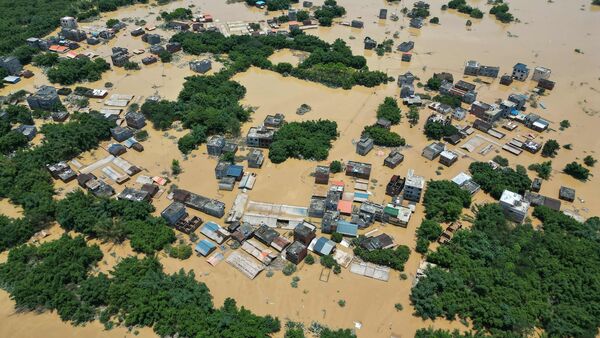|
|
In the face of the worsening global climate crisis, China is grappling with devastating typhoons and extreme weather events.
Typhoon Doksuri, the most powerful storm to make landfall in China since Typhoon Saomi in 2006, caused tens of thousands of people to evacuate their homes in Beijing, and triggered torrential rain across the country. Before it struck China, Doksuri claimed at least 39 lives in the Philippines and affected parts of southern Taiwan.
As the country reels from the impact of Doksuri, another hurricane-level storm, Typhoon Khanun, is brewing in the Pacific Ocean and is projected to be the sixth typhoon to hit China this year.
While Doksuri has caused around $60 million in direct economic losses, damaging over 6,000 hectares of farmland in Fujian, the approaching Typhoon Khanun, upgraded to a Category 3, is expected to worsen the ongoing crisis.
The repercussions of Typhoon Doksuri have been extensive. With rainfall expected to break records, the storm has forced over half a million people in Fujian to evacuate due to flooding, while more than 31,000 people have been evacuated from the capital, Beijing. The storm has already claimed two lives in northeastern Liaoning province, with two more reported missing.
Scorching Heatwaves: Asia Battles Extreme Summer Weather
In addition to the typhoons, much of Asia is facing a record-setting summer of extreme weather. Heatwaves have scorched the region earlier than usual as global records for temperatures, ocean heat, and sea ice loss continue to be broken.
In South Korea, deadly heatwaves have claimed at least 10 lives. Just weeks ago, flash floods and landslides triggered by torrential rain killed at least 41 people. Meanwhile, over 1,000 people have been affected by heat-related illnesses, the majority of them being aged 50 or older.
The city of Gyeongju recorded its highest daily temperature so far this year, a sweltering 36.8 degrees Celsius (98.24 Fahrenheit). Seoul’s affluent Gangnam district saw temperatures reach to 35.7 degrees Celsius (around 96.2 Fahrenheit), indicating the wide-reaching impact of the heat wave.
As China braces for Typhoon Khanun, the severe weather in the region poses a stark reminder of the growing challenges brought on by the climate crisis. Meanwhile, the rest of Asia continues to wrestle with the deadly effects of blistering heatwaves and record monsoon rains, further emphasizing the urgent need for global climate action.












